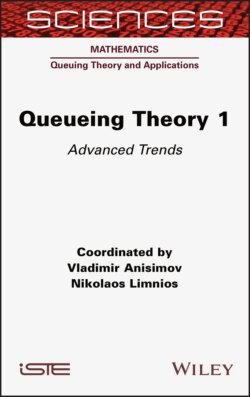Читать книгу Queueing Theory 1 - Nikolaos Limnios - Страница 17
1.2.1.3. Special cases
ОглавлениеCASE 1: Consider the case where f(b) is a decreasing function of b, say for example a = f(b) = 1 – b2, with the strict condition that f(b) = 1 – b2 < b. For this, we have
In this case, as b increases we see that E(X(b)) decreases as well. This is because the arrival probability decreases at a faster rate than service completion increases, i.e. f′(b) = – 2b.
REMARK 1.1.– For the case where a = f(b) = 1 – b2, the arrival probability is a decreasing concave function of the service completion probability and the mean number in the system is decreasing in a convex form.
CASE 2: Next consider the case where f(b) is an increasing function of b, say for example a = f(b) = b2, with the strict condition that f(b) = b2 < b. In this case, we have
In this case, as b increases we see that E(X(b)) increases because the arrival probability increases faster than service completion increases, i.e. f′(b) = 2 b.
REMARK 1.2.– For the case where a = f(b) = b2, with arrival probability increasing in a convex form of the service completion probability, the mean number in the system increases in a convex form as well.
CASE 3: Let us consider another case where f(b) is a linear decreasing function of b, say for example a = f(b) = 1 – b, with the strict condition that 1 – b < b. In this case, we have
In this case, as b increases we see that decreases because the arrival probability is decreasing in the same rate as the service completion rate increases, i.e.
REMARK 1.3.– However, for the case where a= f(b) = 1-b, the arrival probability decreasing in a linear form of the service completion probability, the mean number in the system decreases in a strict convex form.
We summarize the results of the mean number in the system for the three cases in Table 1.1, with **** representing infeasible situations because the traffic intensity is greater than 1.
